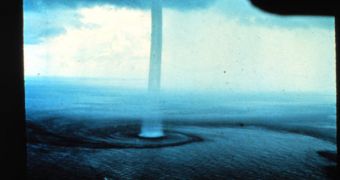For a long time, meteorologists have suspected that a connection must exist between the way autumns and winters unfold and the atmospheric conditions that occur the next spring. Now, a new investigation seems to point out the fact that drier autumns and winters have the potential to calm the tornado-forming ability of springs, causing less such devastating phenomena in the continental United States. Such was the case this year, as we reported earlier, with far less tornadoes hitting the Tornado Alley and other regions in the country. Their intensities were also more reduced than in the last years.
“Our results suggest that there is a statistically significant reduction in tornado activity during a tornado season following drought the preceding fall and winter,” Meteorologist Marshall Shepherd, who is also the lead author of a new paper detailing the find, published in the June 24th issue of the journal Environmental Research Letters, explains. Additionally, the researcher says, wet autumns and winters generate about two times more tornado days the following spring in wet years than in dry ones.
“We do not suggest that soil moisture or precipitation the previous fall and winter exert a direct control on which individual storms will spawn tornadoes. But these long-term seasonal relationships in the study area are striking,” the expert adds. With the help of the Storm Prediction Center of the National Oceanic and Atmospheric Administration, the researchers were able to access the storm-related archives kept in storage, spanning a period of more than 50 years, between 1951 and 2006.
Further storm data were gathered from the National Climactic Data Center, while more pieces of information on meteorological drought conditions were collected from NASA's Tropical Rainfall Measuring Mission (TRMM) satellite, and from historical rain gauges. Georgia and the Southeast regions were the main targets of the investigation, and the researchers focused on the March-June interval, when tornadoes were most active. Upon close analysis of the information, the correlation between atmospheric conditions and the number of tornadoes became immediately obvious.

 14 DAY TRIAL //
14 DAY TRIAL //